Shocking truth about twelve mutilated human hands buried in Egyptian wells 3,500 years ago
Scientists have discovered the shocking truth about twelve severed hands buried in ancient Egyptian burial pits.
They determined that the remains – all right hands – were largely male, with possibly one female, and could provide evidence of the eerie “honor gold” ritual.
The discovery provides physical evidence of an ancient practice in which Pharaoh’s warriors presented the severed right hands of their enemies in exchange for a prestigious reward: a collar of gold beads.
Before these neatly severed hands were unearthed, the “honor gold” ritual was known only through Egyptian funerary inscriptions and temple reliefs dating from 1550–1077 BC.
However, the hands suggest that the ritual was practiced almost a century earlier, as they were found in the Hyksos Palace, the seat of power of Egypt’s 15th Dynasty (1640–1530 BC), invaders from Western Asia.
“It’s delicate work,” said French anthropologist Dr. Isabelle Crevecoeur. “To me that’s a good argument that they did it for a ritual.”
“There are no signs of rough cutting to indicate that it was done very carefully,” explained Dr. Crevecoeur, noting that she was not directly involved in the bone research. “Not with an ax or anything.”
The hands were discovered in three pits in the courtyard ruins of the ruined Hyksos Palace, located in Tell el-Dab’a, the modern name for the ancient city of Avaris.
“After removing any stuck forearm parts, the hands were placed in the ground with fingers spread wide, mainly on the palm side,” the team reported on these “trophies.”
Archaeologists and other scientists now believe that the twelve hands found in the Hyksos Palace are physical evidence of an ancient ritual practice, “honor gold,” in which the pharaoh’s warriors would sacrifice the severed right hands of their enemies in exchange for a prestigious award.
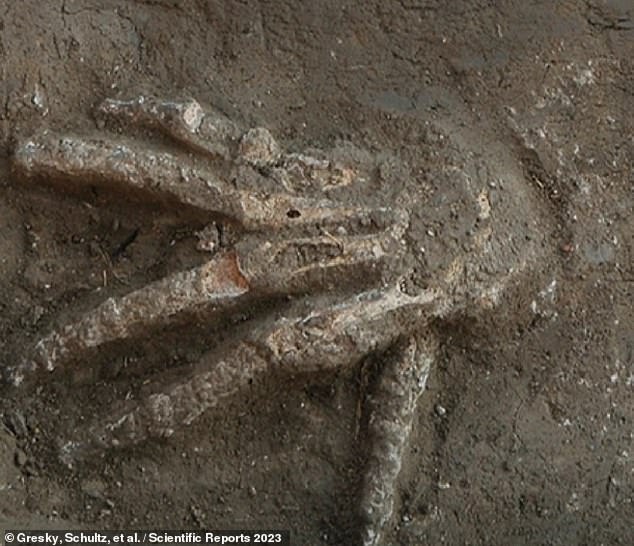
The hands were neatly separated from the victim’s body, which experts said was a sign that the remains were trophies
The careful analysis of bone anatomy was carried out by the German-Austrian team and helped determine the approximate age and gender of those whose hands were ritually cut off.
This osteological work, they said, included a ‘taphonomic’ study of the burial, decay and preservation processes that would also influence the shape of these skeletal remains, to rule out other causes for the shape of the bones on display.
But simpler biological analyzes of the bones were also carried out.
Since male index fingers are known to be longer than their ring fingers, compared to female fingers, it was determined that 11 of the hands were male.
But it could not be ruled out that the twelfth hand was that of a woman, the researchers said.
They estimate that the minimum age at the time of disintegration of each hand was somewhere between 14 and 21 years, as the bones were fully formed and post-adolescent.
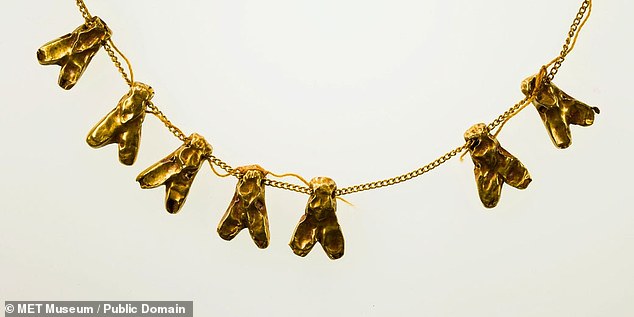
A series of seven flying amulets (above), made between 1600 and 1070 BC, represented strength and tenacity to the ancient Egyptians. These Golden Fly decorations served as an award for bravery bestowed on soldiers who showed exceptional courage in battle, such as the ‘Gold of Honour’
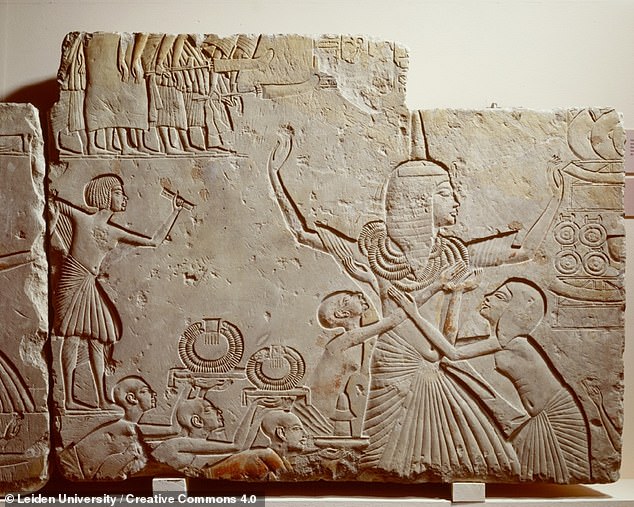
Above is a relief of Horemheb – the last pharaoh of Egypt’s 18th dynasty – receiving the ‘honorary gold’ collar from King Tutankhamun. Before the twelve severed hands were unearthed, this “honor gold” ritual was known to Egyptian scholars only as hearsay, detailed in temple reliefs like this one
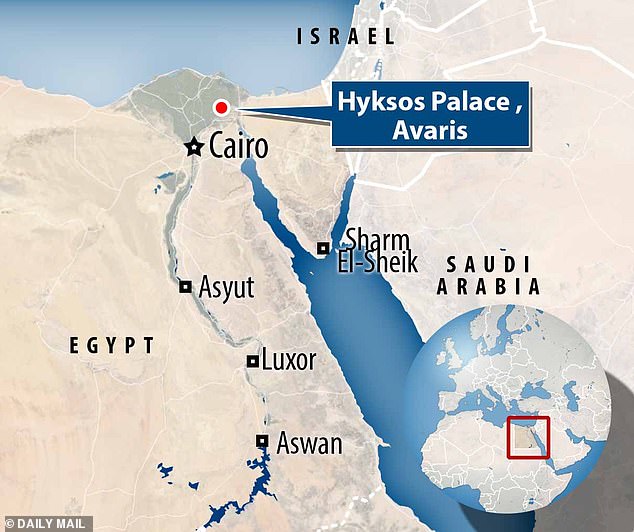
The macabre severed hands were found in the forecourt of the Hyksos Palace in the ancient city of Avaris in northeastern Egypt, once the territory of the invading Hyksos dynasty, now an archaeological site.
The upper age range was estimated to be less than 60 years, as the hands show no signs of age-related degeneration.
“This evidence,” as the team put it in their study, “adds more detail about trophy-taking practices in ancient Egypt.”
That’s what they assumed the ancient Hyksos people had ‘recurring propaganda motives’ for placing the severed hands where they were found in the courtyard of the Hyksos Palace.
But the researchers pointed out that it is still “unclear whether the hands were taken from dead or living individuals,” although they “must have been soft and flexible when placed in the well,” before rigor mortis set in or after it had to arise. ended.
The most likely scenario is that they were placed in the well somewhere between 24 and 48 hours after being removed from the rest of the body.
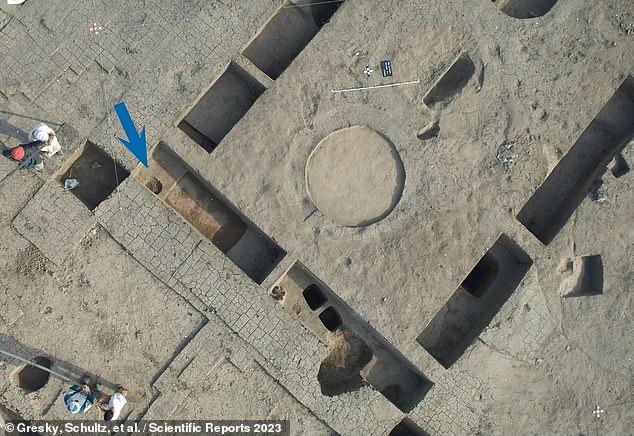
Above, an aerial view of the courtyard of the Hyksos Palace – where the eerie remains of the hands of twelve young victims were laid more than three millennia ago, likely as part of a ceremony to honor warriors.
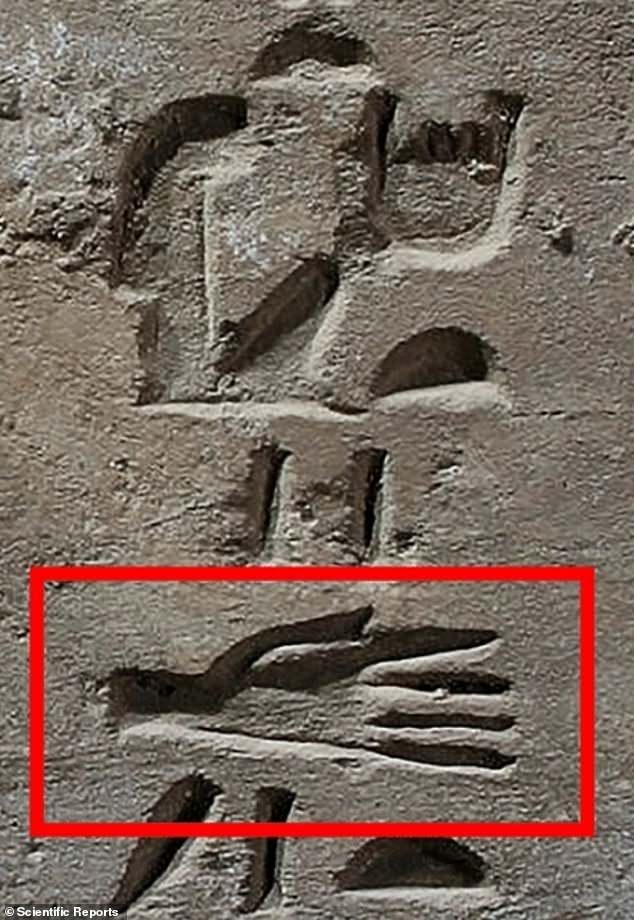
Iconographic evidence of severed hands (photo) is an inscription in the tomb of Ahmose in El-Kab with a very realistic representation of an outstretched palm
Four universities, including Germany’s Göttingen University Medical School and the Austrian Academy of Sciences, collaborated on the study of ancient severed hands.
Austrian archaeologist Dr. Manfred Bietak told the magazine’s news desk Science that he believes that the ‘honor gold’ ritual was probably introduced into Egypt by the invading Hyksos.
The Hyksos, who ruled Egypt for about a century, probably came from the eastern Mediterranean, introducing chariots and new types of weapons to this civilization in North Africa.
That said, the researchers remain modest about the vast gap in information about these age-old practices that hinders absolute confidence in their conclusions.
“Much information about the lives, customs and history of the ancient Egyptians is depicted on temple and tomb walls, as well as recorded on papyri, etc.,” they wrote in their study.
“Just like today, information can create certain ideas, exert political influence and also present facts in a different and not necessarily realistic light,” they admitted. ‘Unfortunately, in history and even more so in prehistory, we are limited to a few sources, sometimes only one.’
